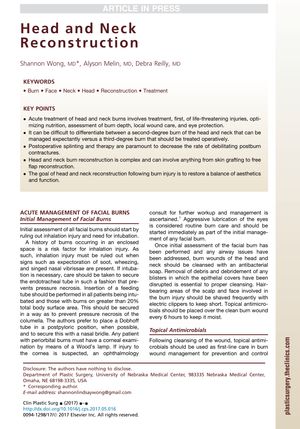Head and Neck Reconstruction: Management and Techniques for Burns
July 2017
in “
Clinics in Plastic Surgery
”
hair transplantation scalp expansion serial excision local tissue rearrangement alopecia eyebrow reconstruction eyelash reconstruction vascularized flaps grafts tattooing hair transplant scalp expander scar revision tissue rearrangement hair loss eyebrow transplant eyelash transplant flap surgery skin grafts cosmetic tattooing

TLDR The document concludes that individualized reconstruction plans are essential for improving function and appearance after head and neck burns.
The 2017 document outlines the management and reconstruction techniques for head and neck burns, focusing on differentiating burn severity, acute care, and reconstructive strategies to improve functional and aesthetic outcomes. It highlights the importance of early excision and grafting for full-thickness burns, the use of skin substitutes, and specific approaches for areas like eyelids and ears. Postoperative care, including the use of silicone gel and compression therapy, is crucial for scar maturation and preventing contractures. The document also details reconstructive techniques for various head and neck regions, respecting aesthetic units and ensuring functionality. For hair loss, it suggests serial excision, local tissue rearrangement, hair transplantation, and scalp expansion, with the choice depending on the size of the alopecia area and the scalp's condition. Eyebrow and eyelash reconstructions are also discussed, with options like vascularized flaps, grafts, and tattooing for camouflage. The document emphasizes the need for individualized reconstruction plans after burn scar maturation.



